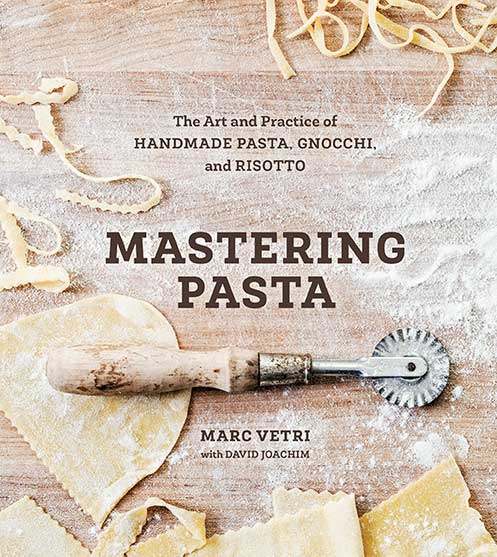
MASTERING PASTA: The Art and Practice of Handmade Pasta, Gnocchi, and Risotto
Marc Vetri, David Joachim Ed Anderson
Ten Speed Press
March 2015
$29.99/hardcover
ISBN: 978-1607746072
Marc Vetri, David Joachim Ed Anderson
Ten Speed Press
March 2015
$29.99/hardcover
ISBN: 978-1607746072
Trained in Bergamo, Italy, by some of the region’s most noted chefs, Marc Vetri is the chef/owner of Philadelphia’s Vetri Ristorante, Osteria, Alla Spina, and Amis (named one of the top ten places for pasta in the country by Bon Appétit magazine).
Vetri has been profiled in the New York Times and Gourmet magazine and named one of Food & Wine’s Ten Best New Chefs. He received the Philadelphia Inquirer’s highest restaurant rating and won the James Beard Award for Best Chef Mid-Atlantic.
He lives in Philadelphia, PA.

David Joachim has authored, edited, or collaborated on more than thirty-five cookbooks, including the IACP award-winning The Food Substitutions Bible and the New York Times bestsellers A Man, a Can, a Grill and Mastering the Grill, co-authored with Andrew Schloss. He lives in Allentown, Pennsylvania. Visit David at: www.davejoachim.com.
MASTERING PASTA is a complete primer on artisan pasta-making from acclaimed Philadelphia chef Marc Vetri, featuring 100 of his favorite recipes.
Providing a deep exploration of Italy’s fascinating pasta traditions and detailed guidance for home cooks seeking authentic approaches, this comprehensive guide covers all the pasta basics along with risotto, gnocchi, and crespelle. From building doughs from scratch to pairing them with the ideal sauces and condiments for spectacular finished dishes, Vetri delves deep into food science and reveals the secrets of the very best pasta.